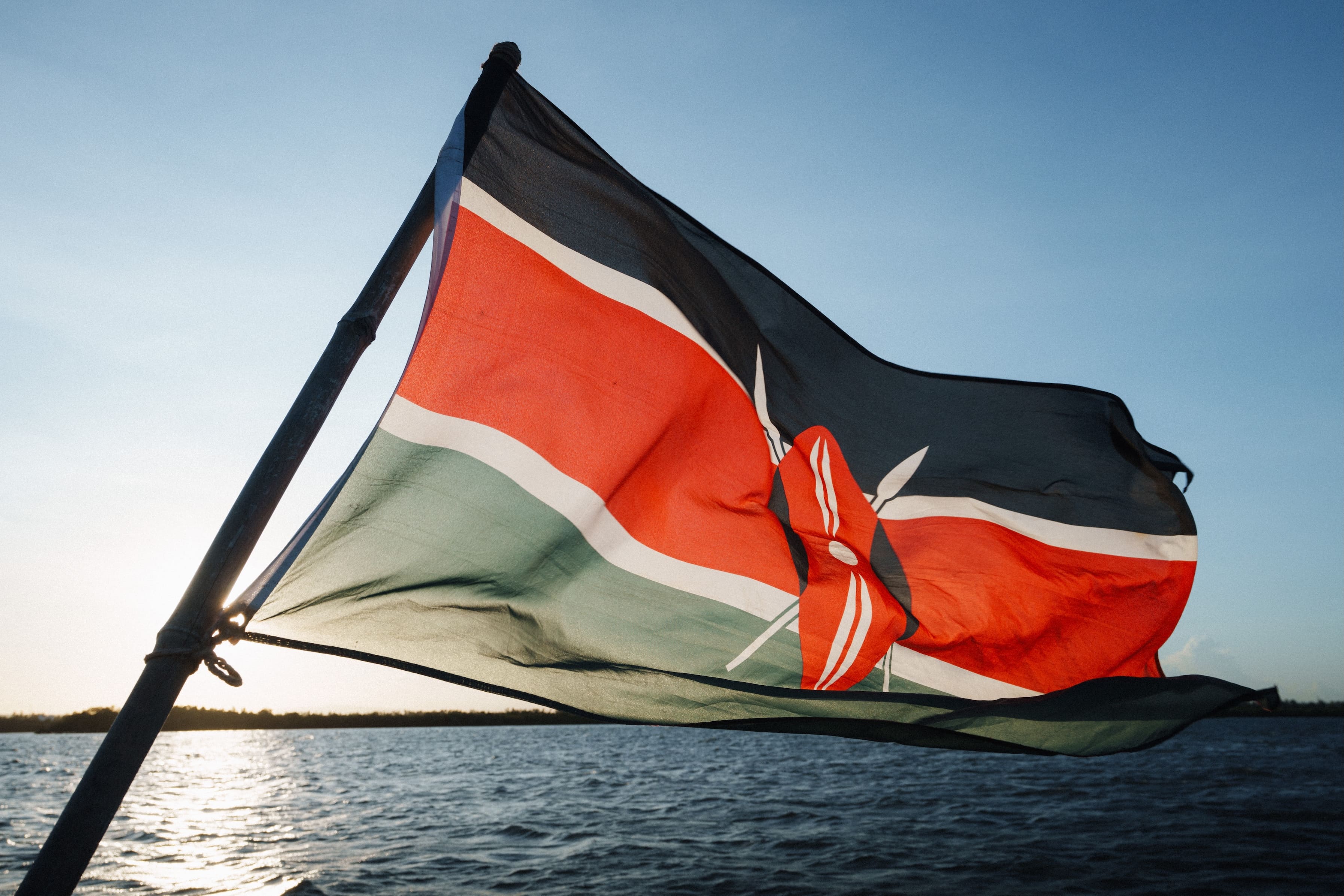
The wonders of Kenya on water
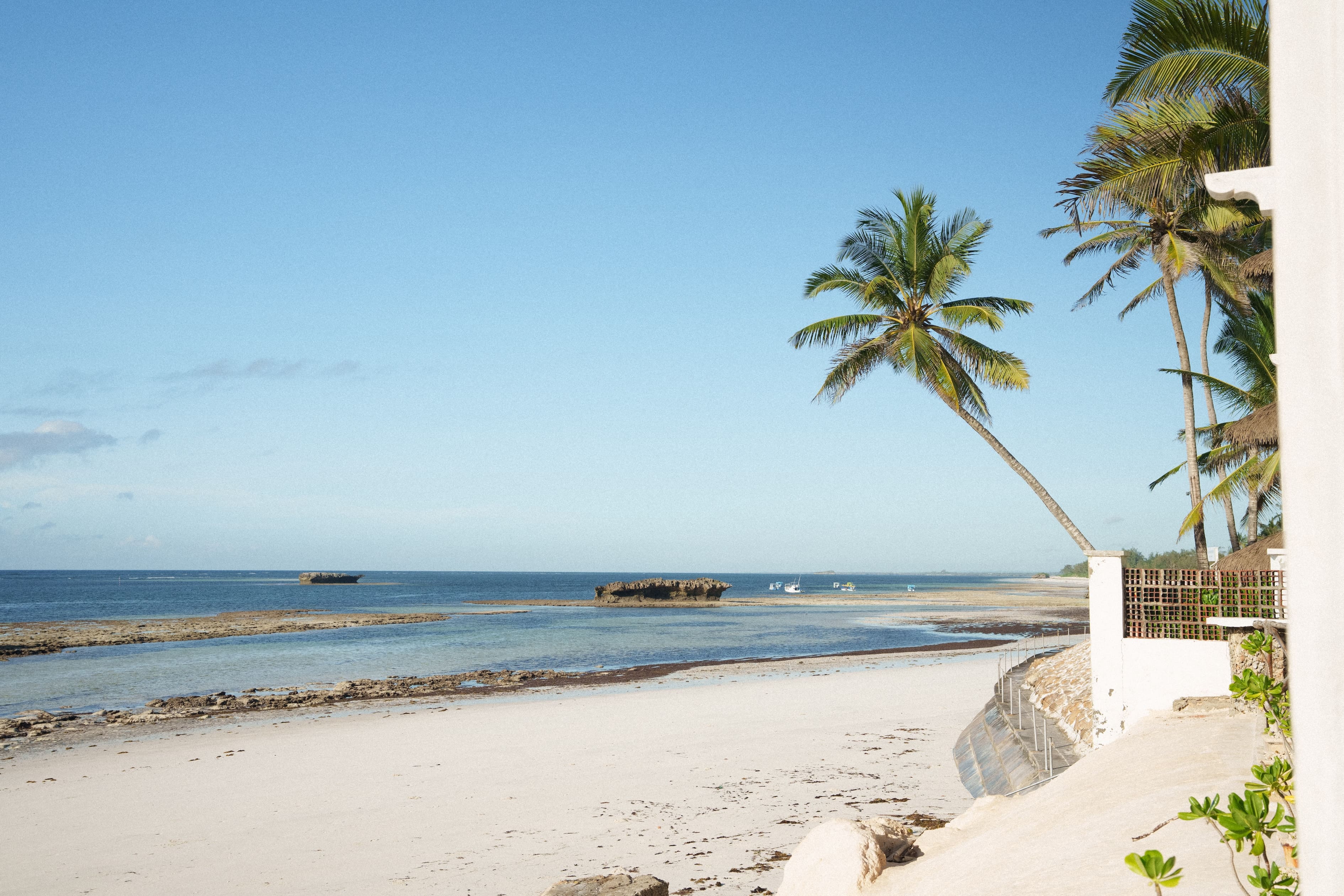
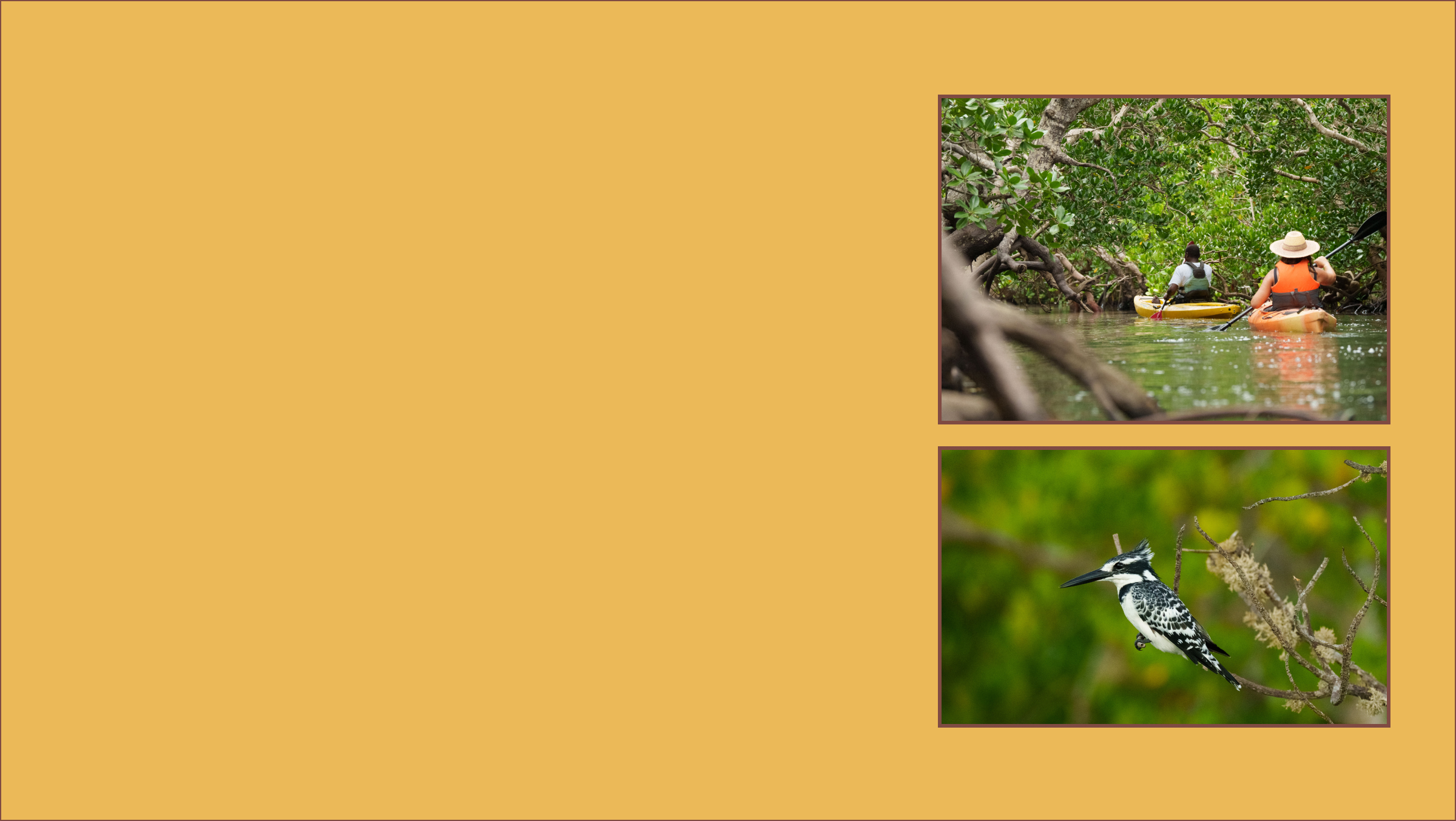
Paddleboarding through the mangroves
The night before, just to be safe, I’d set three alarms — I wasn’t about to miss this early start. I leave home before dawn, having booked the earliest departure in order to squeeze every moment from this coastal escape. As the taxi pulls up, Nairobi, ever restless, hums with life even in the dark. After a quick cappuccino at the airport, I head straight to the gate. The first light spills across the sky as I board a flight bound for the Swahili coast, during which the majestic and timeless Mount Kilimanjaro makes a fleeting appearance, peeking through the clouds before slipping quietly from view.
My destination is Malindi, a historic coastal town that marks the beginning of my journey to Watamu, just north of Mombasa. As a child, I spent countless school holidays in Watamu with my family, and now I’m back to experience its magic once more. After a swift 50-minute flight, I land in Malindi, where Raymond, my transfer driver, waits to take me to the heart of Watamu.
Watamu faces the Indian Ocean on Kenya’s east coast, known for its pristine beaches, crystal-clear waters, and vibrant marine life. The town has long been a haven for explorers and locals alike, with roots dating back to the 12th Century, when it was a bustling Swahili trade port. Today, it remains a peaceful retreat, offering an enchanting blend of history, adventure, and natural beauty.
After a 30-minute drive, I arrive at Watamu Treehouse. I’m greeted by Amy and Boris, the managers, who show me around the property, which seems to me like an architectural marvel. Its gleaming white towers rise above the coastal forest, dreamlike in their flowing curves and asymmetrical lines. The structure, designed by the local artist Nani Croze of Kitengela Hot Glass, includes walls adorned with vibrant stained-glass panels, casting colourful patterns throughout the interior. Built high among the trees, the house offers panoramic views of the Indian Ocean and the surrounding forest, seamlessly blending with its natural environment and offering an idyllic escape for those in search of wellness and tranquility. I settle in, take a deep breath, and then head out to follow a winding forest path to the beach. As I step onto Watamu’s shores, I’m immediately captivated.
After a peaceful walk along the beach, I indulge in a breakfast of fresh yoghurt, granola, seasonal fruit, and tropical honey. Later, after unpacking, I take a boda boda (motorbike taxi) to Pili Pan restaurant just down the road, where I savour a delicious dish of tikka chicken with tamarind yoghurt sauce and fresh passion fruit juice, a true taste of Watamu’s coastal charm.
The real adventure, one of the Kenya Tourism Board’s signature experiences in Watamu, begins in the afternoon. Watamu Treehouse hosts a thrilling exploration of the nearby creek, starting with a tuk-tuk ride through lush landscapes to our launch point. Kayaks and stand-up paddleboards are ready, and we set off into the mangrove channels. The silence of the water is broken only by the occasional flutter of bird wings as we glide past towering mangroves, whose roots play host to crabs peeking from the shadows. The experience is surreal — a natural paradise frozen in time. We beach our kayaks and paddleboards and take a walk along a narrow trail winding through towering, tangled mangroves. The thick, otherworldly canopy filters the sunlight into dappled gold, while roots twist like ancient sculptures underfoot.
Later, as the sun begins to set, we anchor our paddles in the main channel and enjoy a moment of stillness, sipping chai masala and nibbling on freshly prepared popcorn. The colours of the sunset are breathtaking, and peacefulness seeps into the evening. Back at Watamu Treehouse, a hearty dinner of fish kebabs, potatoes, and salads awaits.
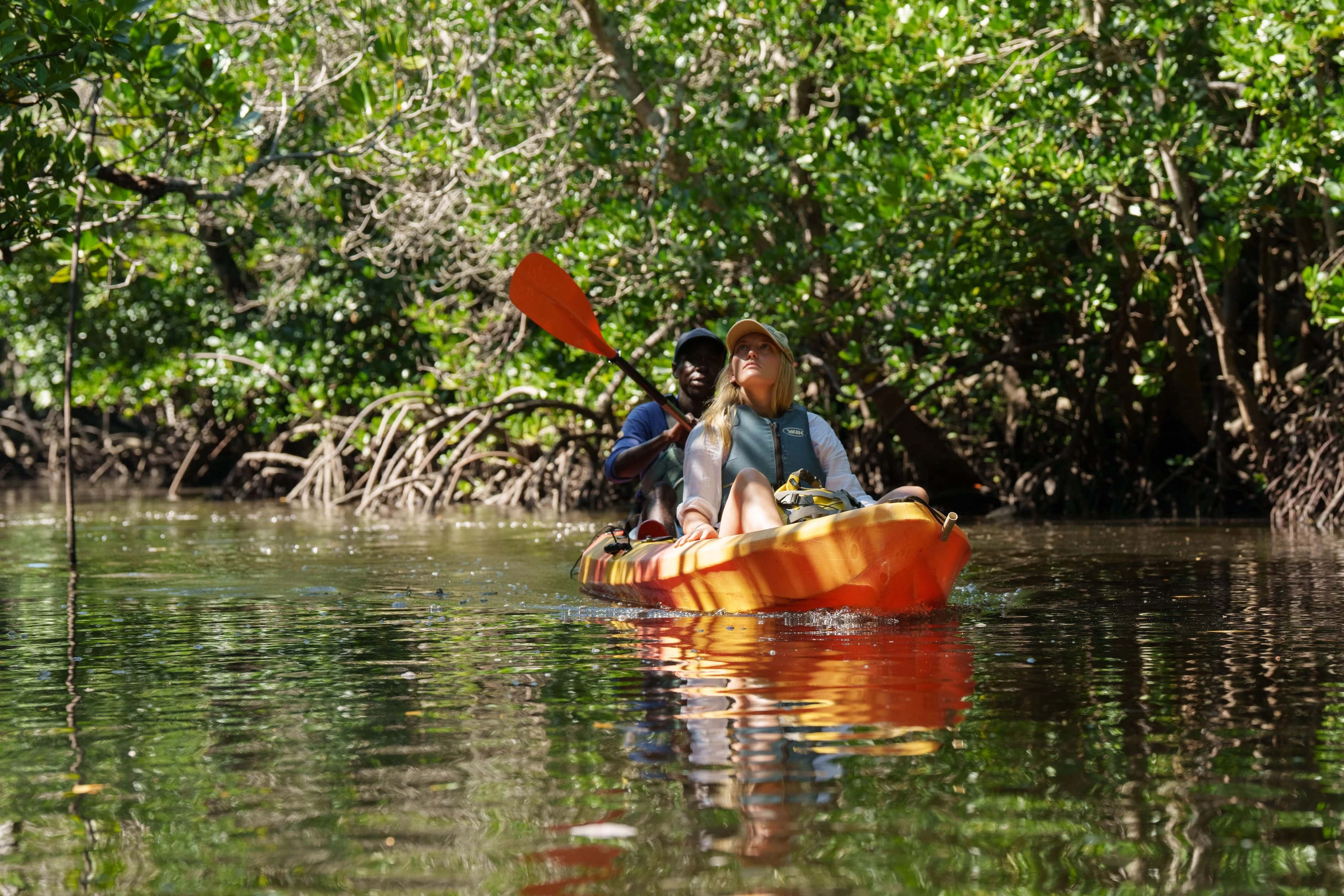

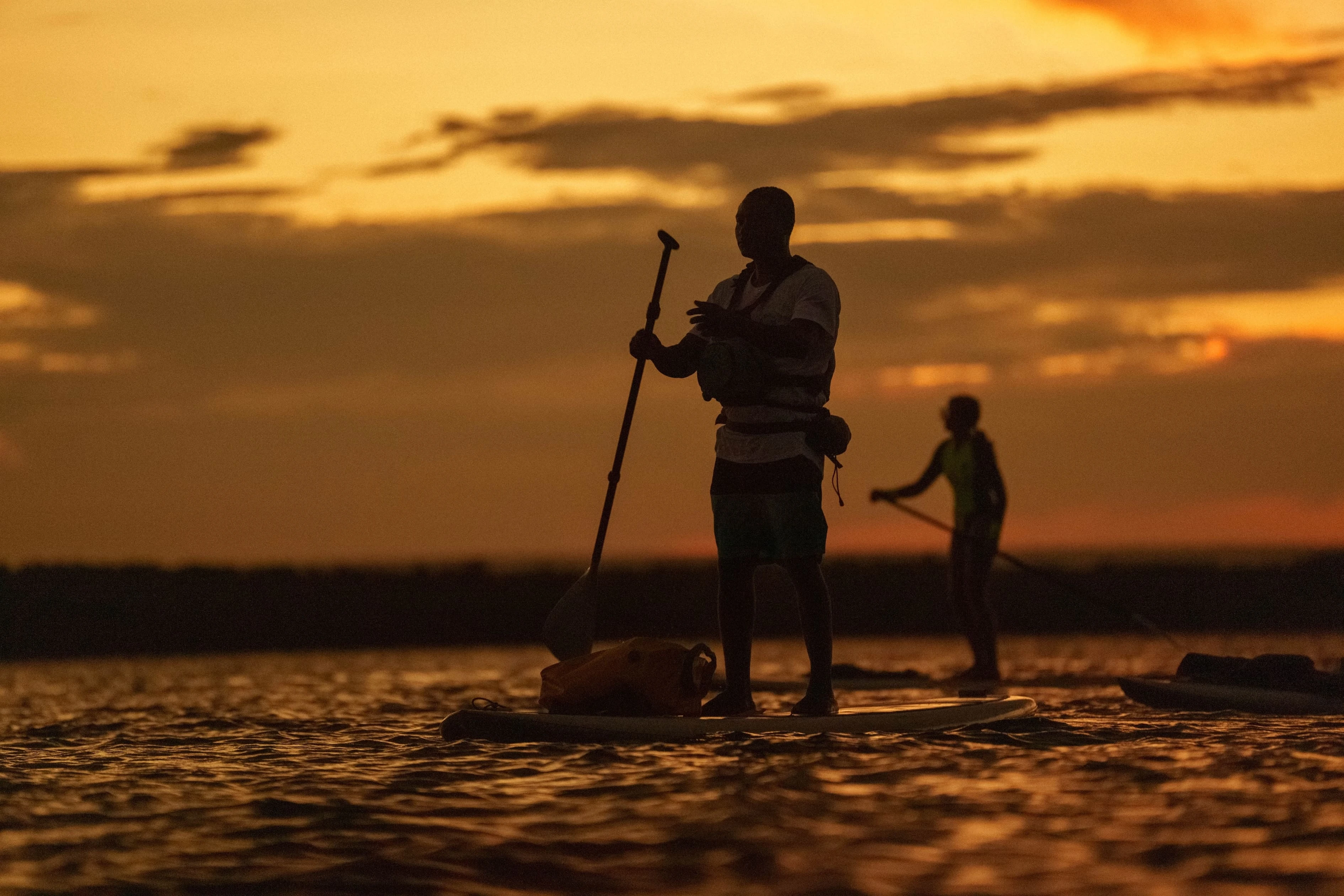
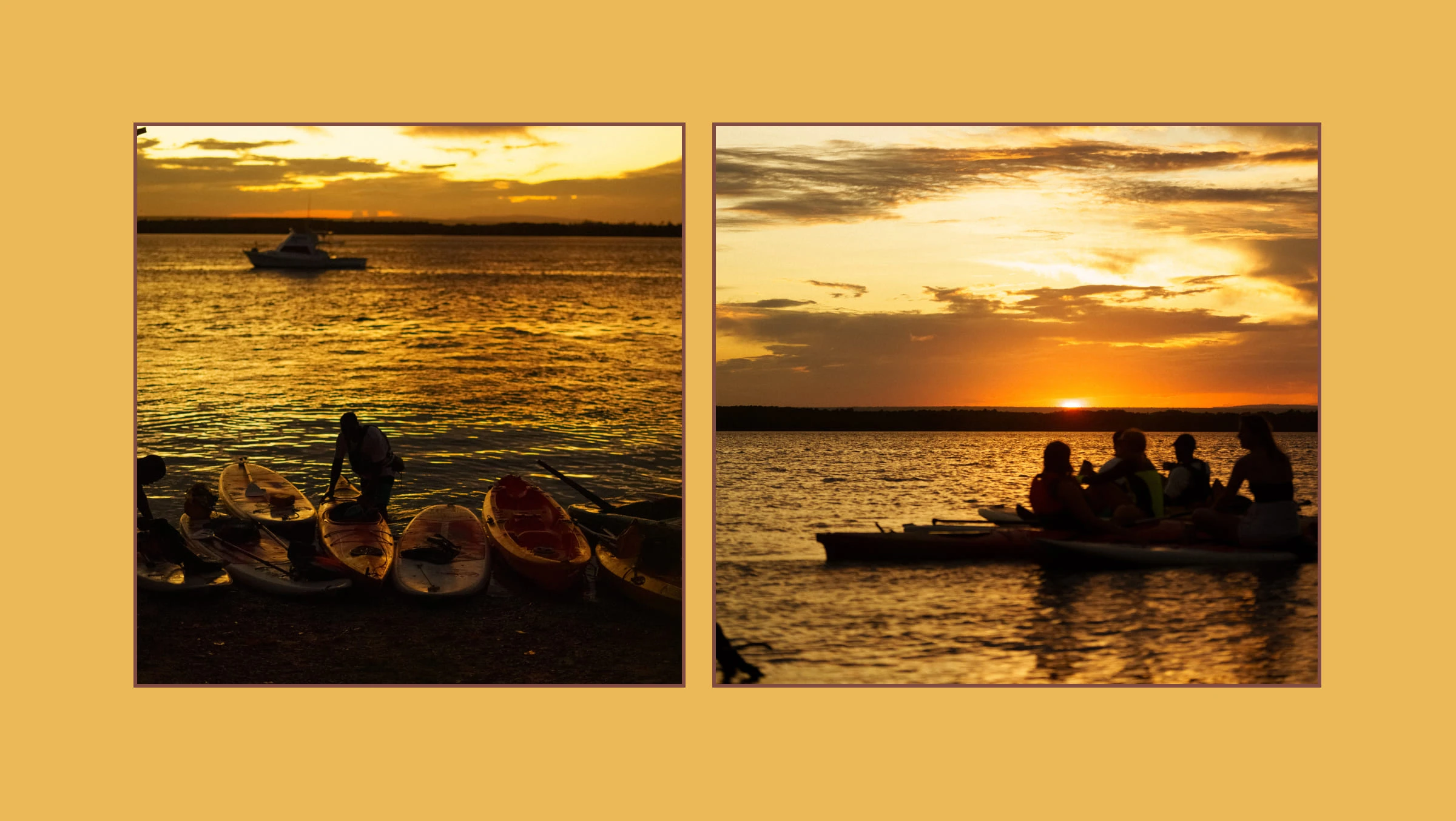
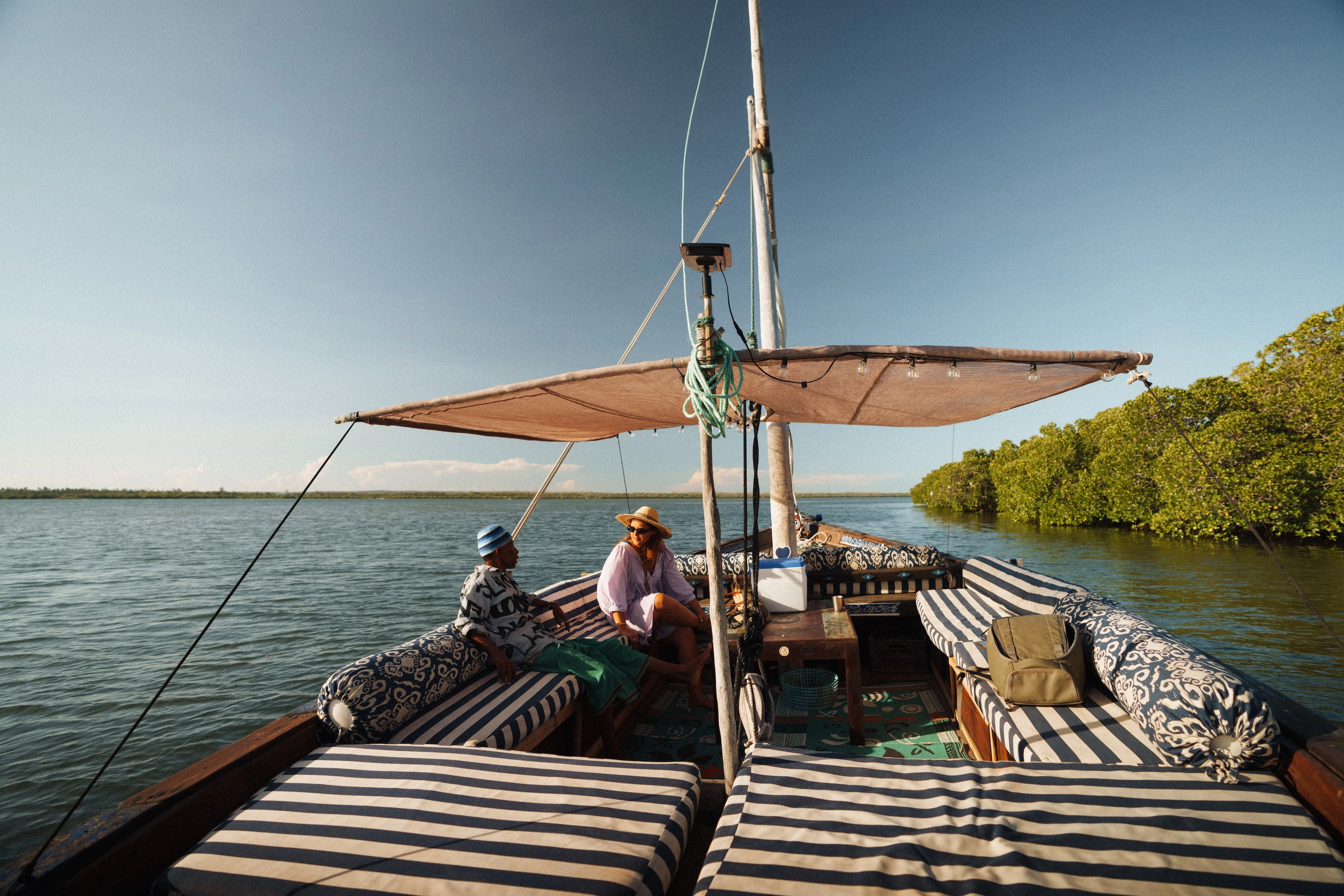
Watamu means “sweet people” in Swahili, and the warmth of the people here certainly lives up to the name.
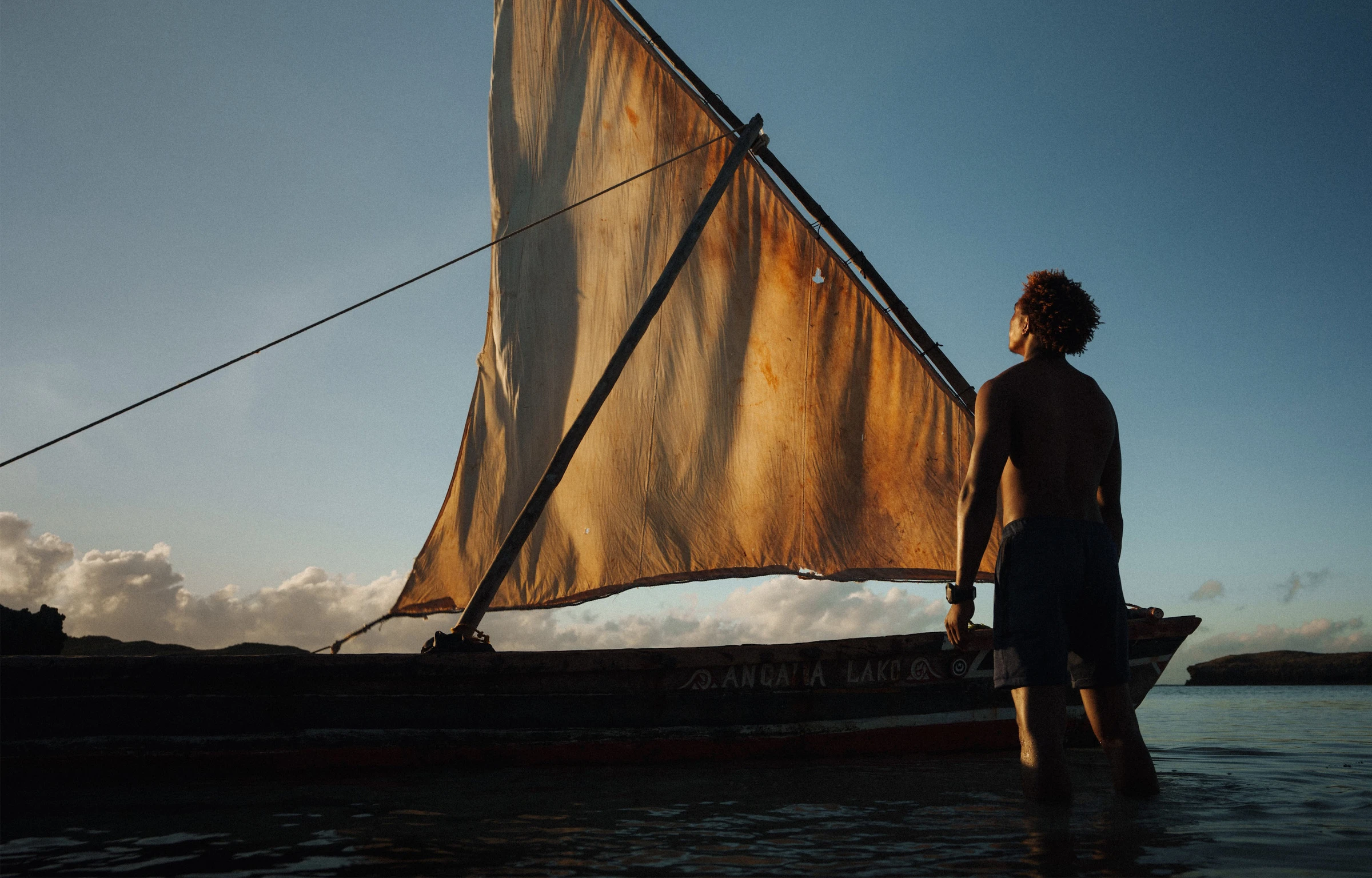
Sailing the Watamu waves
The next morning, I’m greeted by a knock on the door and fresh coffee. I head down to the beach to catch the sunrise over the Indian Ocean, the horizon stretching out like an unspoken promise. It’s a 10-minute tuk-tuk ride to Willy Beach, where I watch fishermen returning with their night’s catch as excitement builds in the air. Large crowds gather to inspect the tuna, while others examine the smaller catches of the day. It’s a glimpse into the rhythm of coastal life. Later, I watch as a ngalawa, a traditional Swahili sailing dhow or boat, sets sail with two young fishermen, their faces full of anticipation.
Later, Amy lets me know there’s going to be a green turtle release led by Local Ocean Conservation, a nearby non-governmental organisation. The turtle, rescued from a fisherman’s net and nursed back to health, is now ready to return to the ocean. I join a small crowd on the beach to witness its release and watch in awe as it paddles into the surf and disappears into the turquoise depths. It’s a quiet, powerful moment that speaks to the heart of Watamu’s conservation spirit.
That afternoon, I head out on a dhow sailing trip with Africa Born tours. A dhow is a traditional wooden sailing boat, used for centuries along the East African coast — long and elegant, with a single lateen sail that catches the wind like a wing. Aboard the dhow, called Manangu, we glide through the mangrove-lined channels and open water, spotting pied kingfishers hovering above, yellow-billed storks wading below, and flashes of white and black as sacred ibis and cattle egrets take flight. As the sun begins to sink, we anchor for a sundowner — cold drinks, fresh fruit, and golden samosas passed around as the light turns everything to amber.
The wind picks up, and we switch to the motor for our return — but the magic lingers. Back at the Treehouse, dinner is waiting: grilled prawns, tofu, a zesty papaya salad, and a warm cup of chai masala. Satisfied, I climb into bed with the hum of the ocean still in my ears, already dreaming of what tomorrow might bring.
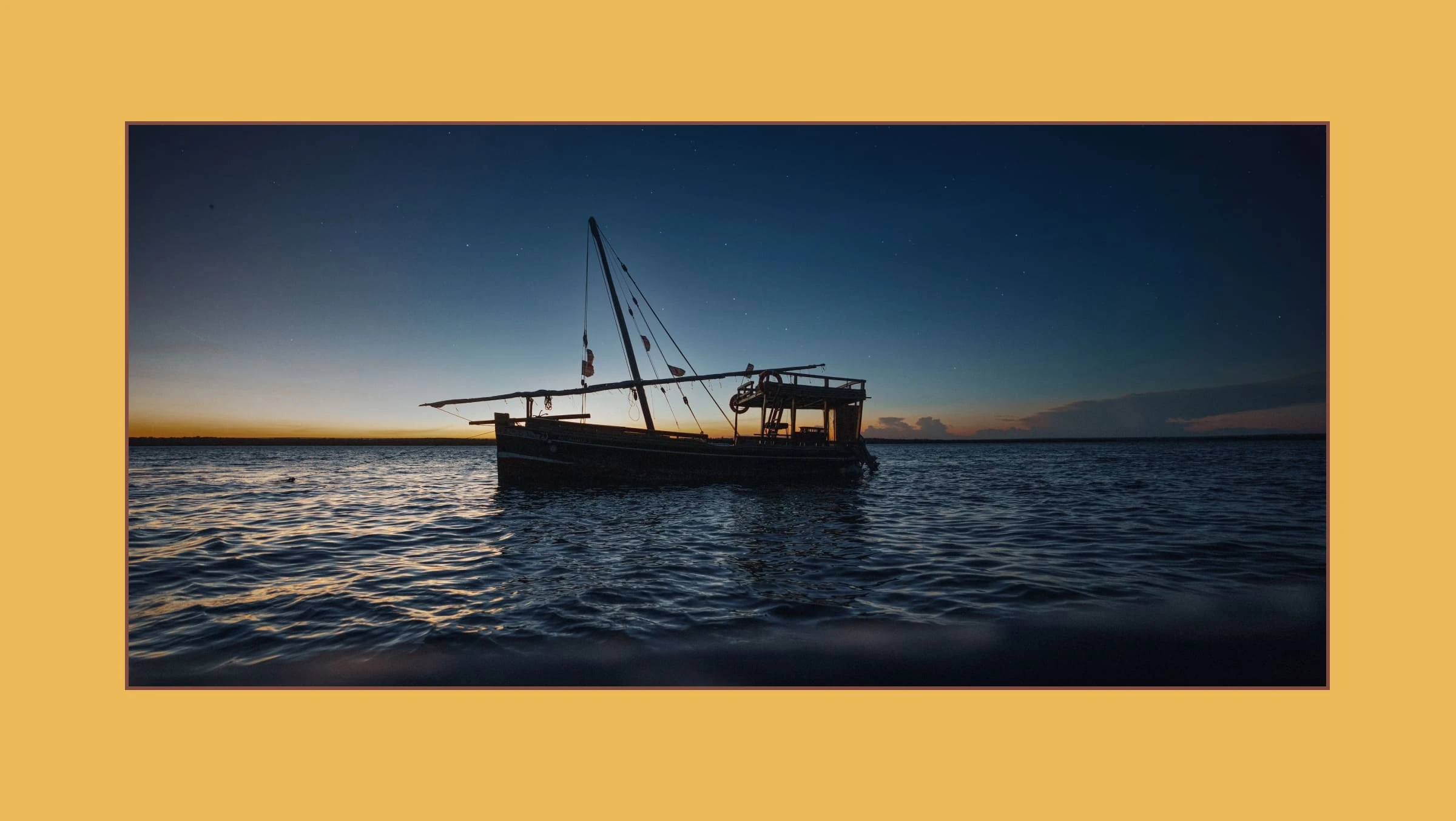
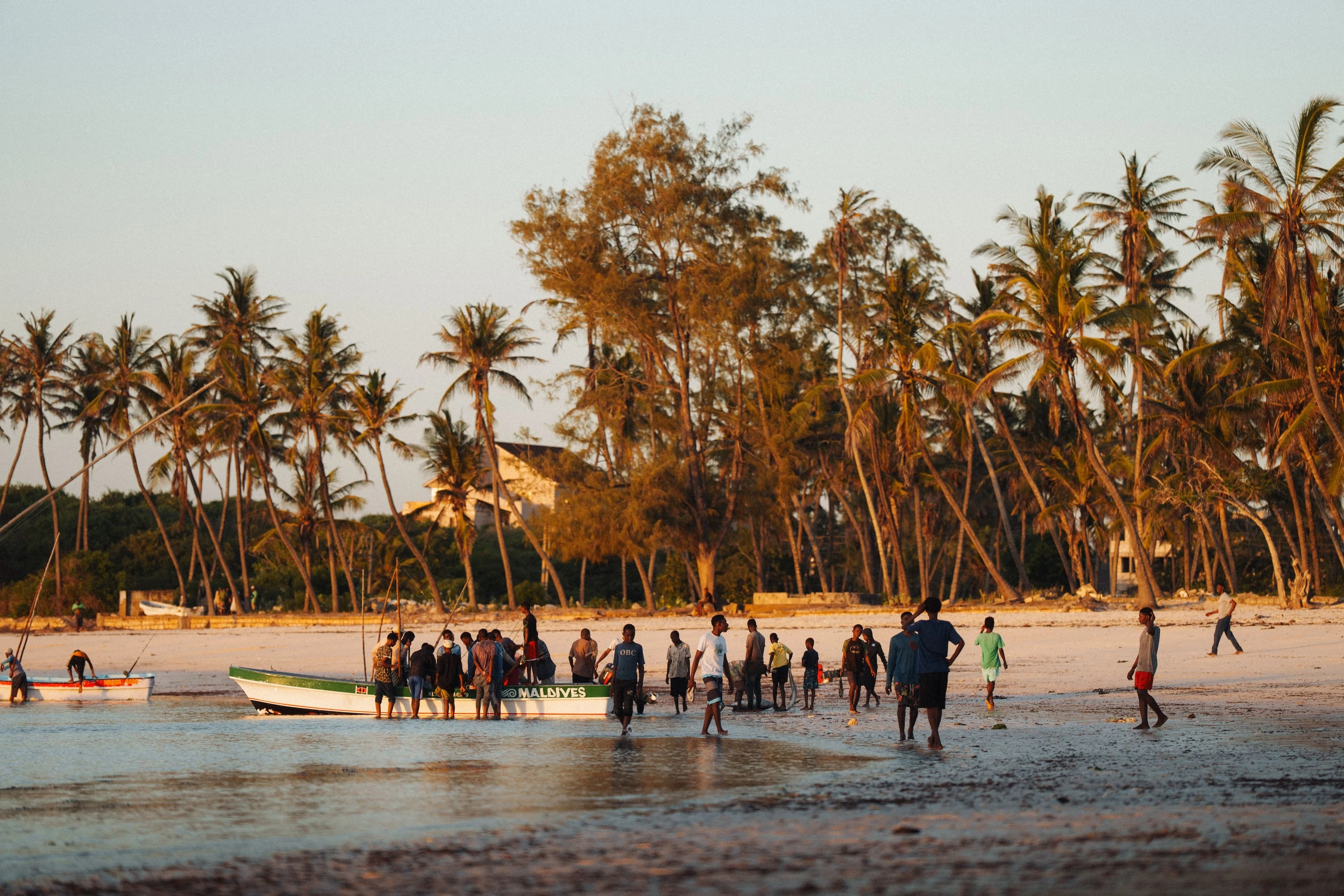
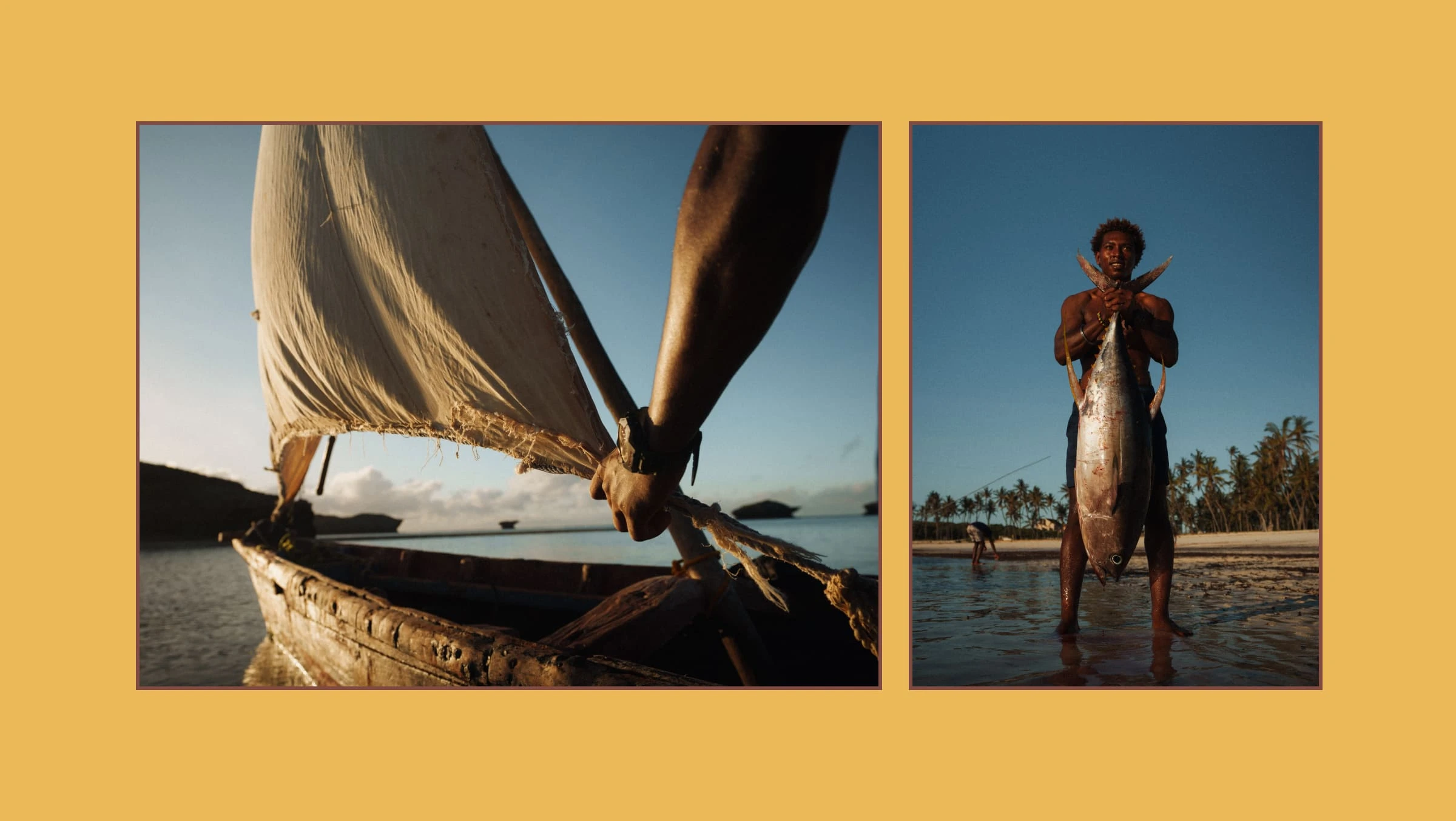
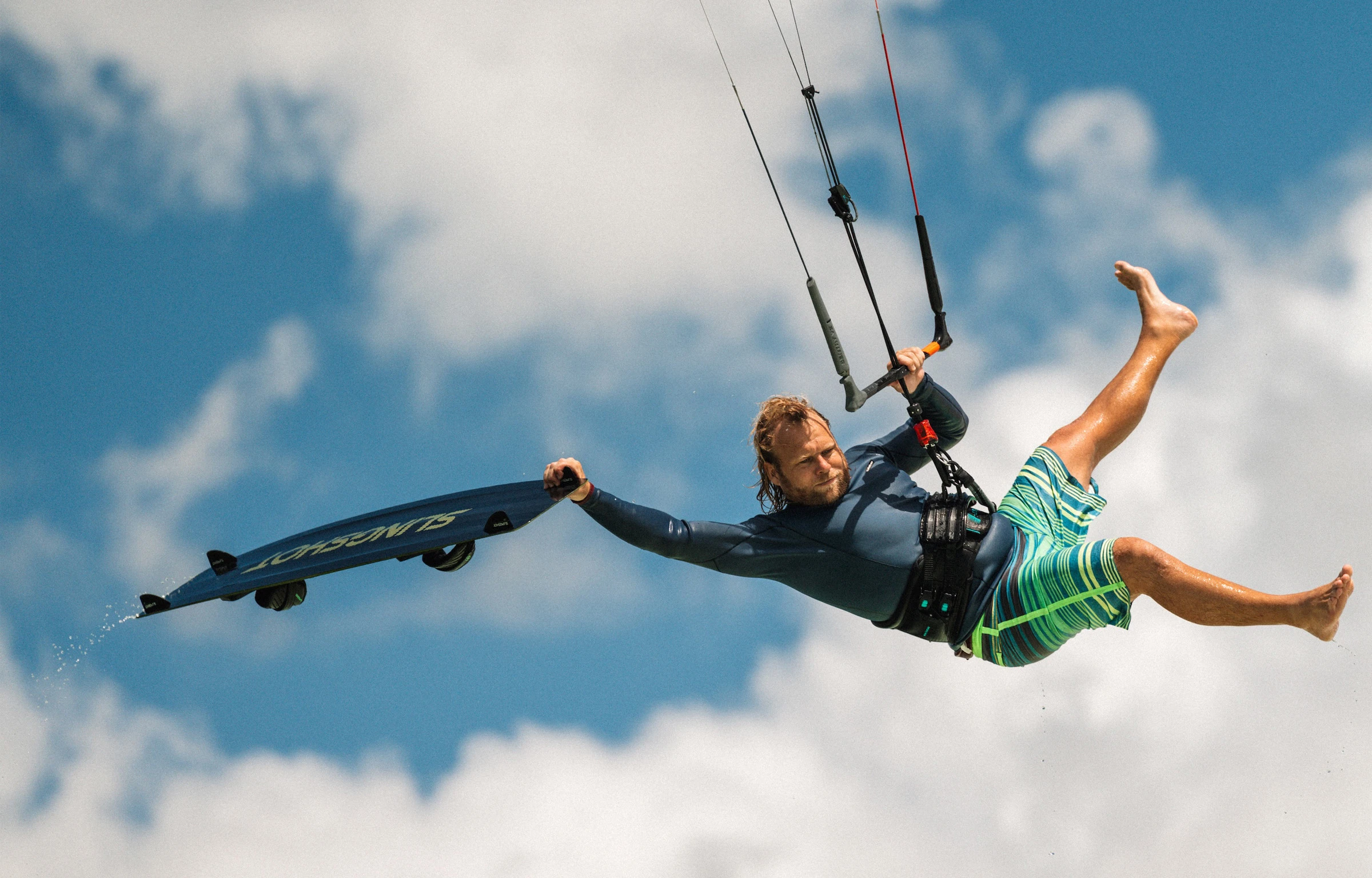
Kitesurfing on Garoda Beach
The following day brings more excitement as I head to Garoda Beach for kitesurfing lessons with Tribe Watersports, a company that’s been part of Watamu’s water sports scene since 2012. There’s a lot to choose from: kite surfing lessons for beginners, snorkelling trips, kiteboarding safaris and kayaking, to name just a few of their activities. Tribe provide all safety equipment when undergoing beginners lessons! The thrill of mastering something new is invigorating, and I’m eager to return to Watamu to continue my kitesurfing journey in the near future.
My time here has been an unforgettable blend of adventure, culture, and natural beauty. The people, the landscapes, the rich history—once again Watamu has left a mark on me, and I’m already planning my return.
From the lion-stalked grasslands of the Mara to the crimson soil of Samburuland, from the shores of the Kenyan coast to the diversity of Diani, and to the heights of Mount Kenya, this is Kenya seen from every angle. It’s a land where culture, thrills, beauty, and conservation collide in glorious harmony. From iconic landscapes to hidden gems, every corner of this country offers something unforgettable. Whether you’re floating above elephants in a balloon, racing Samburu warriors on foot, or diving into Watamu's thrilling water activities, there’s always a story waiting to be discovered. Kenya is not just a destination — it’s a journey through land, sea, and sky, and I’m proud to call this place home.
How to get there:
Daily scheduled flights to Malindi from Nairobi then a 30 minute drive to Watamu, alternatively, you can drive from Nairobi which takes 10 hours. Another option is to take the SGR train from Nairobi to Mombasa (about 6 hours), followed by a 3-hour drive up the coast to Watamu if you like rail travel.
Activities:
Scuba diving, snorkelling, fishing, dolphin watching, kayaking, wing foiling, spot fishing, and a visit to the Bio-Ken Snake Park, which also serves as one of Kenya’s only anti-venom centres.
NB: Please travel safely and responsibly. Only adventure on the water if you’re physically able to and with qualified guides. The kitesurfers pictured are experienced instructors. Lesson participants are required to wear full safety equipment including helmets and lifejackets.
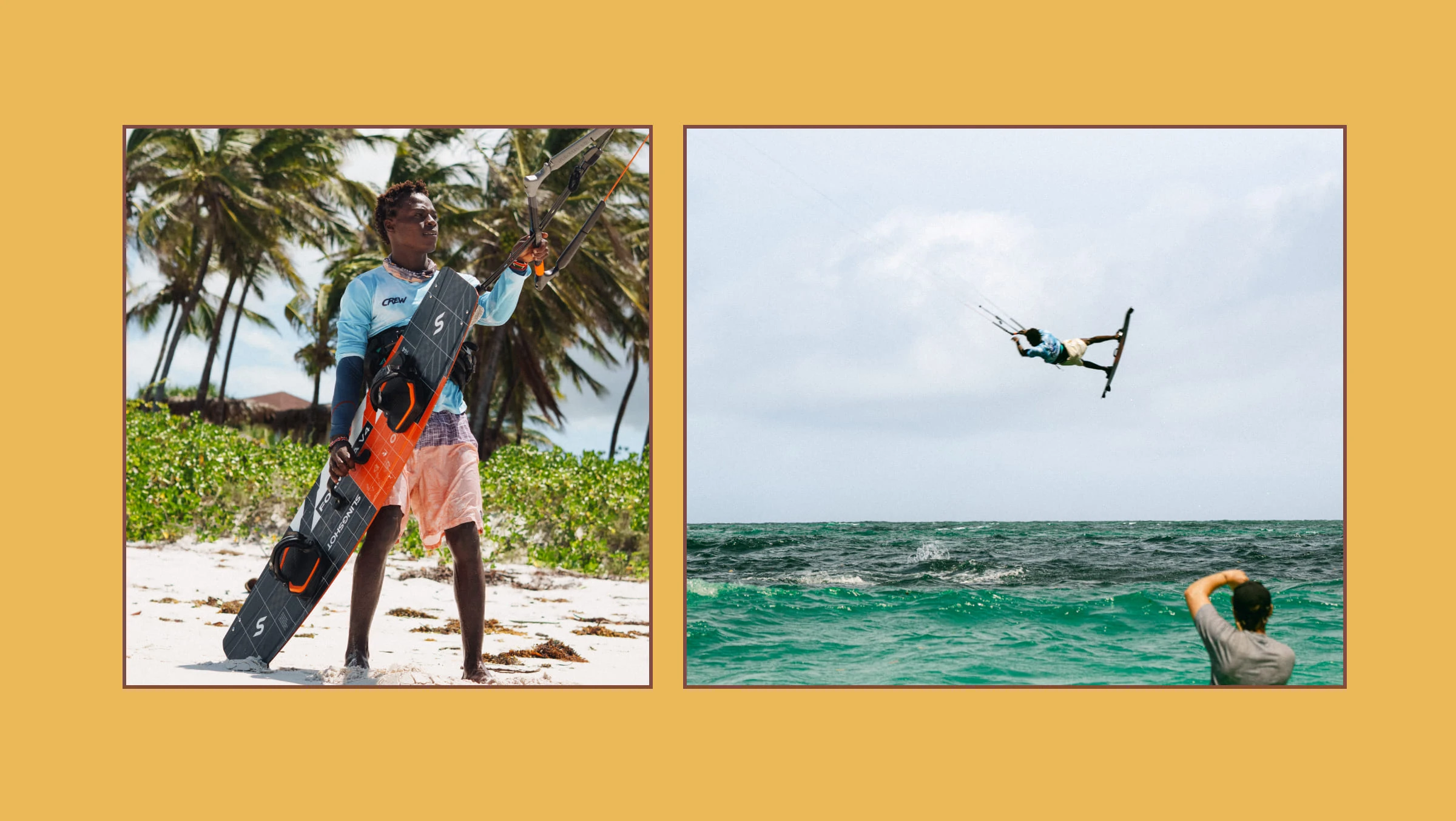
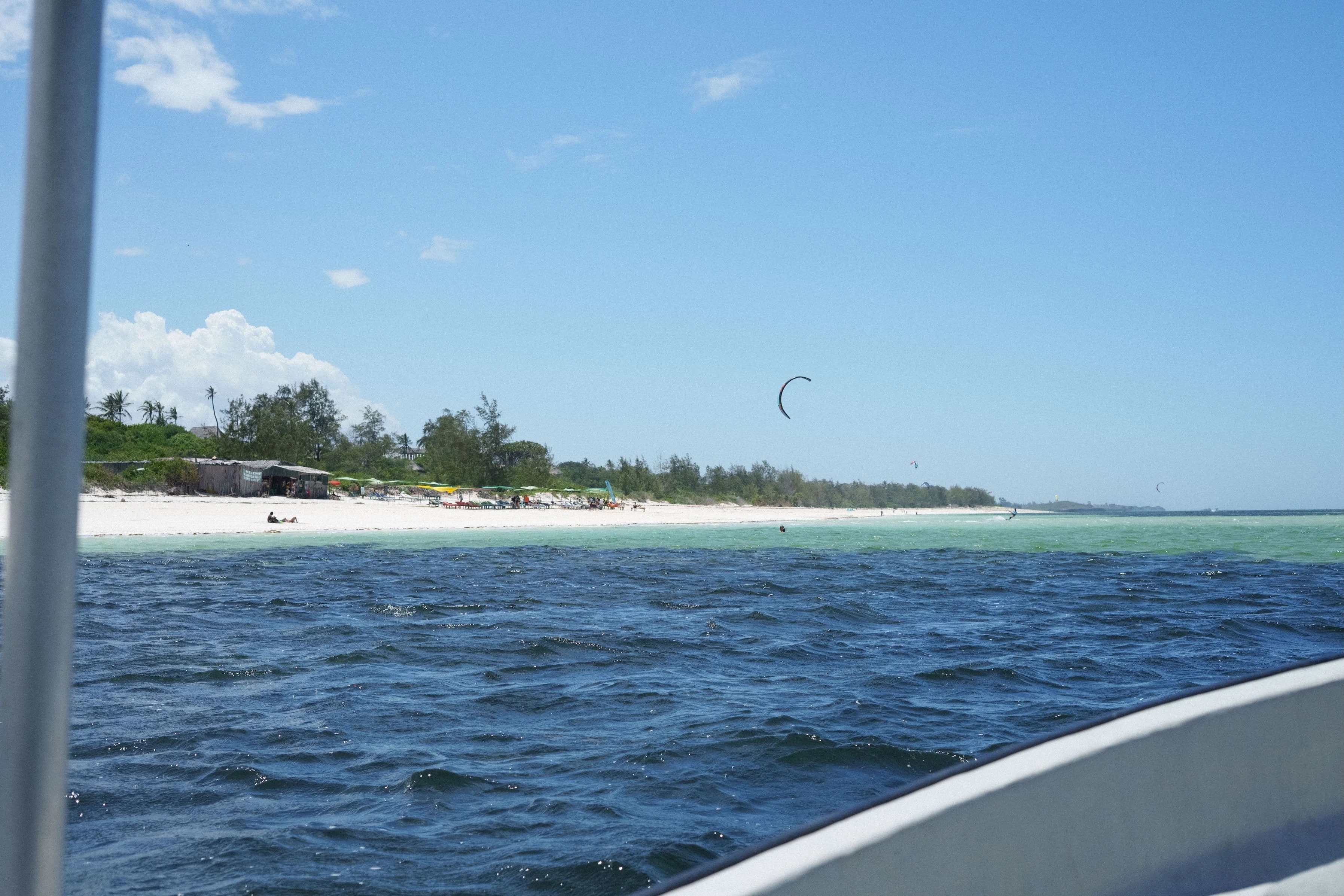

Jack Swynnerton
Jack was born in Australia and raised in the safari hub of Arusha, Tanzania, from the age of three. He grew up immersed in the wild and had the privilege of exploring all corners of Africa, with extensive experience across East Africa. Coming from a long line of game wardens, naturalists, hunters, and guides, Jack inherited a deep-rooted love for the wild. As the fourth generation of his family to live in East Africa, he has been based in Nairobi for the last three years. A passionate traveller, wildlife enthusiast, and skilled photographer, Jack spends his time journeying across Africa, capturing its beauty and telling the stories of its wild heart.
Discover more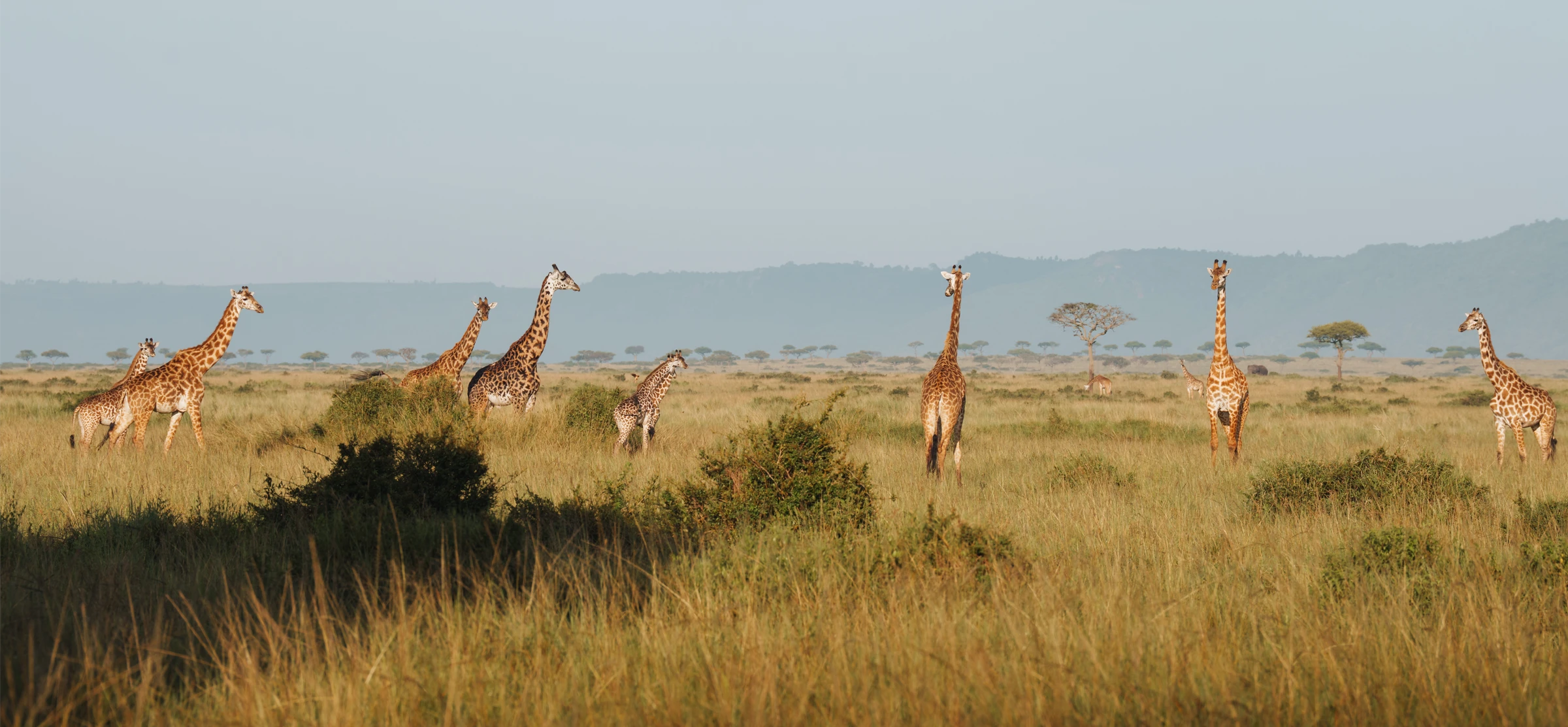
Kenya Tourism Board
From the magic of the Maasai Mara, to the rich biodiversity of the Kenyan coastline, discover all of Kenya’s unrivalled experiences.
Discover moreSHARE THIS STORY
